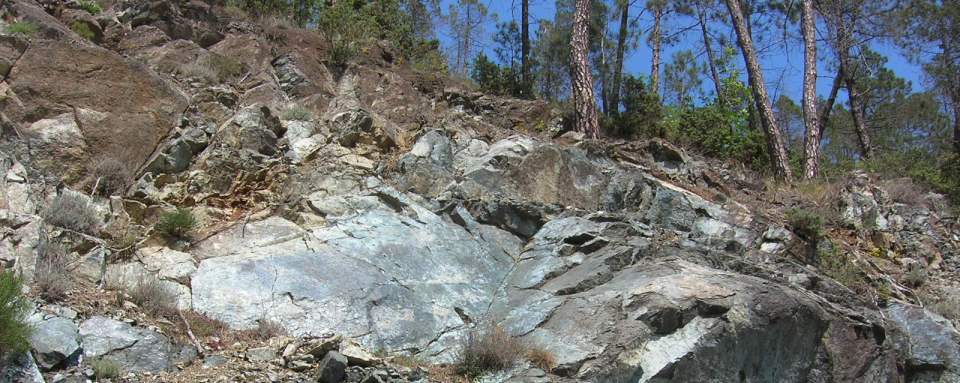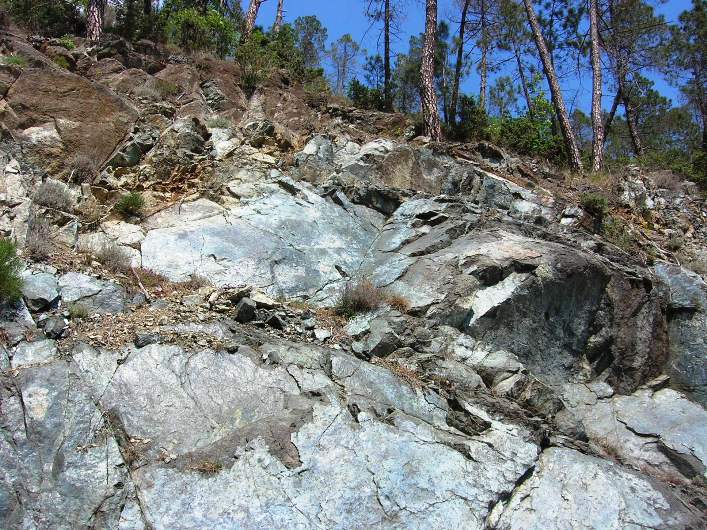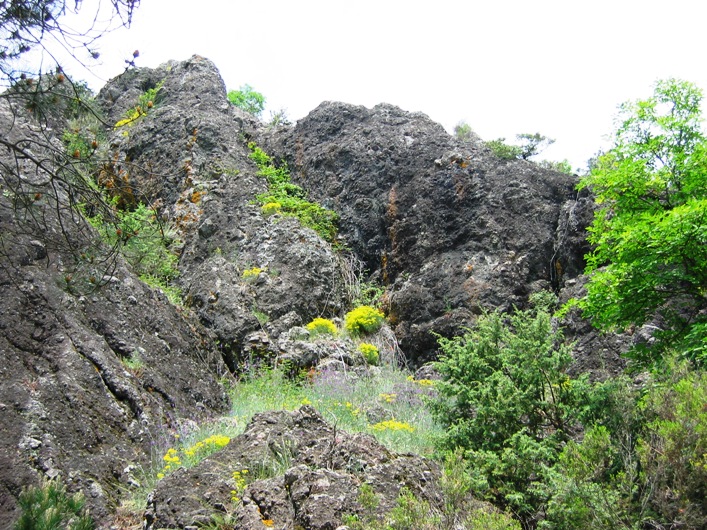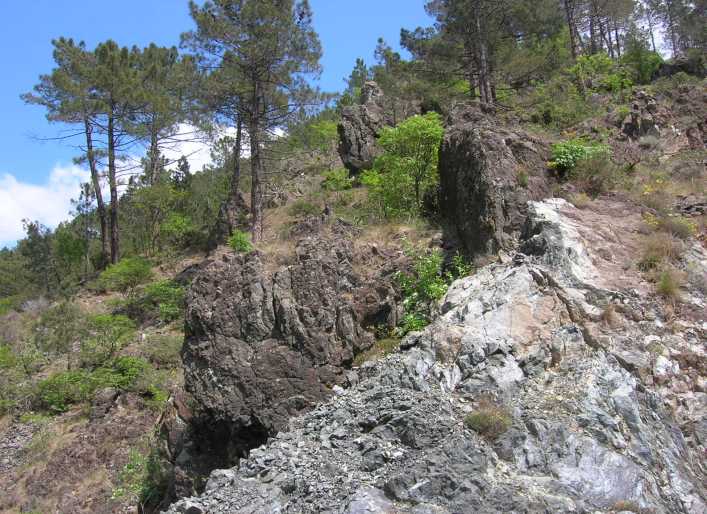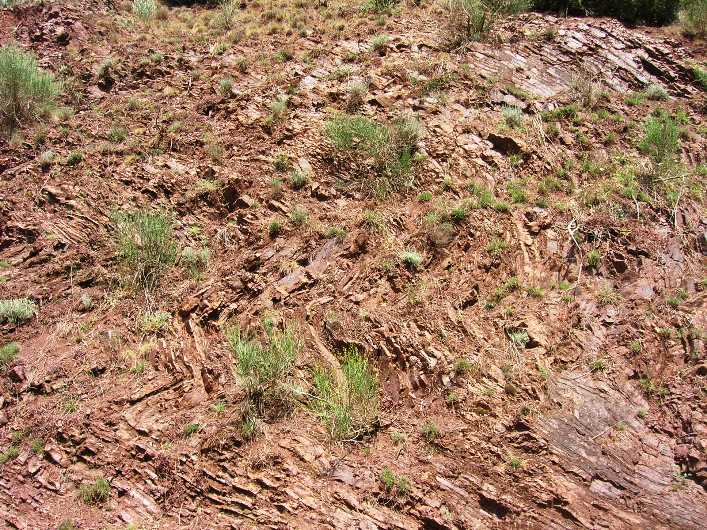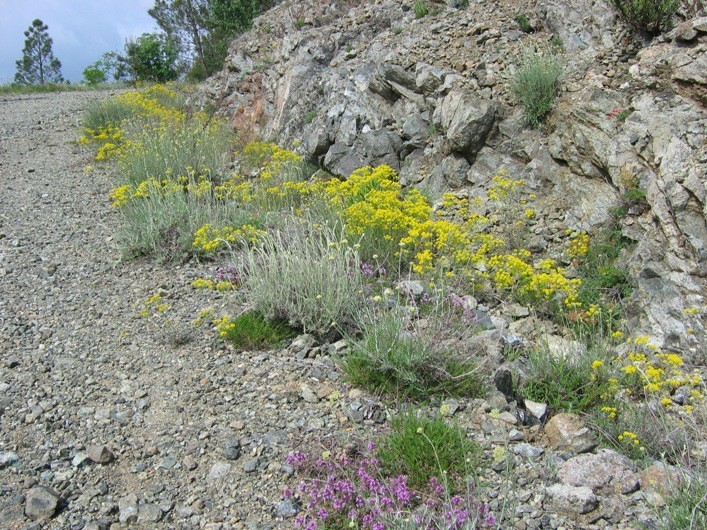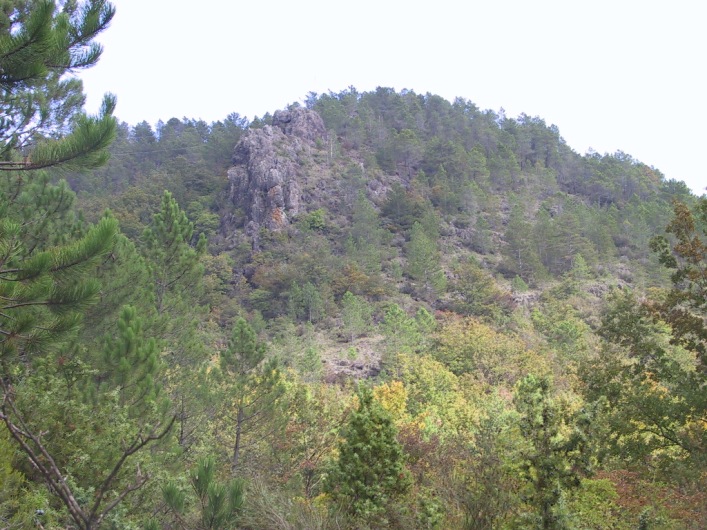The rocks of Monti Rognosi: the geology
Monti Rognosi are part of a significant surfacing of ophiolites, which means various rocks having a volcanic and submarine origin: serpentinite, gabbro and basalt. The term ophiolite is from ancient greek ophis (snake) and lithos (rock, stone) and it is used because the surface of these rocks reminds the skin of a reptile. This surfacing formed around 200 million years ago: prior to that, it was merely the floor of the Piemont-Liguria paleo-ocean, an ancient basin which is associable to the actual Mediterranean Sea. The mountain chain is the result of submarine eruption, in which the magma cooled in contact with water, giving birth to different types of rocks. A slow cooling gave us serpentinites and gabbros, rocks which are the result of the interaction between lava and salt water, while a fast cooling has as a result the formation of basalt. Among these rocks, serpentinite is the most abundant and that explains the dark color of the mountains. Ophiolites are continuously created still nowadays, whenever a submarine crack opens in the crust. During tectonic movements which led to the rise of Apennines many parts of the oceanic plateau emerged and moved towards the hinterland giving birth to the ophiolitic system which reaches Pieve Santo Stefano.



